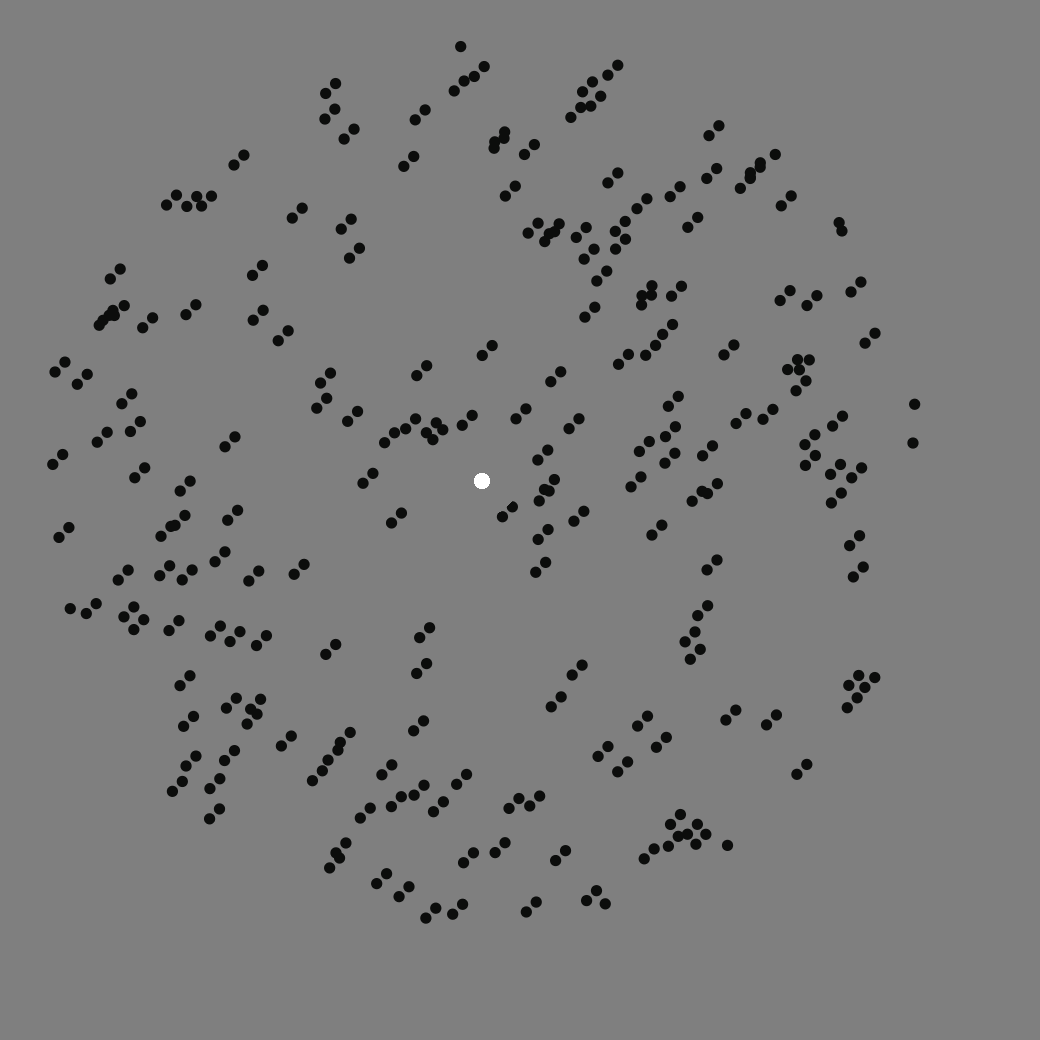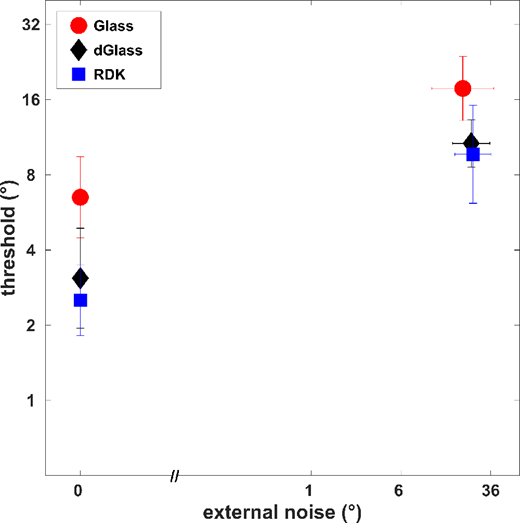
Global motion and global form perception have been found to be abnormal in the presence of amblyopia. How such deficits manifest in visual function reliant on the interactions between these two visual processing mechanisms has not been adequately explored. In the current study, we use dynamic Glass patterns (dGlass) to measure implied motion thresholds in variable external noise to investigate the local and global limitations of processing.The dynamic Glass patterns contain multiple independent Glass patterns displayed over time. The dipole pairs do not correspond from one frame to the next despite the absence of correspnding elements as in real motion display (RDK), a sense of motion is readily perceiavble without direction.(Figure 1)
 Figure 1: dynamic Glass pattern display containing 9 frames of independent static Glass patterns
Figure 1: dynamic Glass pattern display containing 9 frames of independent static Glass patterns
A total of 13 amblyopes and six visually normal controls discriminated the overall implied motion of dGlass generated by presenting nine independent sets of static Glass patterns over 0.5 seconds. The orientation of dipole elements was derived from the Gaussian distribution with prescribed mean and standard deviation that served as external noise. Thresholds at varying external noise were fitted to a set of linear amplifier models that were statistically compared to investigate the contribution of local and global processing parameters.
The statistical comparison of nested models showed normal internal noise and sampling efficiency parameters for both strabismic and anisometropic amblyopia (PS >0.50).The implied motion threshold for amblyopic eyes were also similar to thresholds for RDK at low and high noise levesls but lower compared to static Glass patterns. (Figure 2) The normal thresholds for implied motion in this study would suggest that motion aids the perception of global form cues present in dynamic Glass patterns. Our results challenge the proposed dorsal stream vulnerability in developmental disorders such as amblyopia.
 Figure 2: Mean thresholds for dynamic Glass patterns (dGlass) from amblyopic eyes in comparison to the static Glass patterns (Glass) and RDKs. Error bars represent the standard deviation.
Figure 2: Mean thresholds for dynamic Glass patterns (dGlass) from amblyopic eyes in comparison to the static Glass patterns (Glass) and RDKs. Error bars represent the standard deviation.